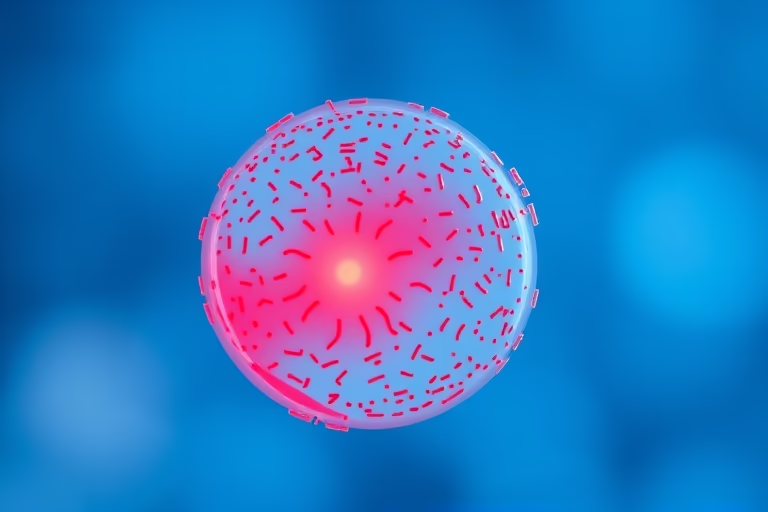Understanding Implantation Bleeding and Yeast Infections
Implantation bleeding and yeast infections are two different yet significant health topics that often concern many individuals. Understanding both is essential for maintaining good reproductive health.
Implantation bleeding occurs when a fertilized egg attaches itself to the uterine lining, which may result in light bleeding or spotting. This bleeding typically happens around a week to two weeks after conception, around the time a woman might miss her period. This phenomenon is often mistaken for a menstrual cycle, causing confusion among many women who are trying to conceive.
On the contrary, a yeast infection is a fungal infection caused by an overgrowth of the Candida yeast, which is normally found in small amounts in the body. When the balance of this yeast is disrupted, it can lead to uncomfortable symptoms such as itching, burning, and abnormal discharge. This presentation of symptoms makes it crucial to distinguish between implantation bleeding and a yeast infection.
1. Causes of Implantation Bleeding
Implantation bleeding is typically caused by the implantation of a fertilized egg into the uterine lining. When the embryo embeds itself, it can disrupt small blood vessels, resulting in light spotting. The time frame for this depends on the ovulation cycle and the timing of fertilization. However, several other factors may also contribute to this occurrence:
- Hormonal Changes: When pregnancy occurs, the body experiences significant hormonal changes that can impact the lining of the uterus.
- Uterine Conditions: Existing conditions within the uterus, such as fibroids or polyps, can also lead to unexpected bleeding.
- Medications: Certain medications, particularly those affecting hormonal levels, can influence bleeding patterns.
- Menstrual Cycle Timing: Some women may experience a mix of normal cycle bleeding and implantation bleeding due to the timing of their cycle.
Recognizing these causes can help clarify what symptoms may accompany pregnancy as opposed to other conditions.
2. Symptoms of Implantation Bleeding
Identifying the symptoms of implantation bleeding is critical for distinguishing it from menstrual bleeding, and this can help alleviate anxiety for those trying to conceive. The symptoms typically include:
- Light Pink or Brown Spotting: Implantation bleeding is usually lighter than a normal period and often appears as a pink or brown discharge.
- Short Duration: Unlike a menstrual cycle, which can last several days, implantation bleeding lasts only a few hours to a couple of days at most.
- Minimal Cramping: Some women report mild cramping during this time, which is usually less intense compared to menstrual cramps.
- No Clots: This bleeding generally doesn’t involve blood clots, unlike many menstrual cycles.
These distinguishing symptoms can provide clarity and peace of mind, enabling women to understand their bodies better.
3. Yeast Infections: Their Symptoms and Causes
Yeast infections, especially those resulting from Candida overgrowth, can be uncomfortable and disruptive. The most common symptoms include:
- Intense Itching: The affected area may feel extremely itchy, leading to irritation.
- Burning Sensation: Some women may experience a burning feeling, particularly during urination or intercourse.
- Abnormal Discharge: A thick, white, odorless discharge resembling cottage cheese is a hallmark sign of a yeast infection.
- Redness and Swelling: In some cases, the surrounding areas may become swollen and red.
Understanding these symptoms is vital, as they may be initially confused with sexually transmitted infections or bacterial infections.
4. Factors Leading to Yeast Infections
Several factors can lead to the overgrowth of Candida yeast in the body:
- Antibiotic Use: Antibiotics can disturb the natural balance of bacteria in the microbiome, allowing Candida to thrive.
- Hormonal Changes: Fluctuations in hormones during pregnancy, menstruation, or certain therapies can promote yeast growth.
- Weakened Immune System: Those with compromised immune systems are more susceptible to infections.
- Diabetes: High blood sugar levels create a favorable environment for yeast growth.
By understanding these factors, individuals can take proactive measures to minimize the risk of developing a yeast infection.
5. The Connection Between Implantation Bleeding and Yeast Infections
Many women may find themselves questioning whether they are experiencing implantation bleeding or the onset of a yeast infection. Understanding the distinctions can enhance health literacy:
- Timing: Implantation bleeding usually occurs around a week after conception, while yeast infections can happen at any point, especially when risk factors manifest.
- Symptoms: As previously mentioned, while implantation bleeding is light and short, a yeast infection typically presents with more intense symptoms.
- Discharge Color and Consistency: Implantation bleeding often appears light pink or brown, whereas yeast infection discharge is typically thick and white.
Knowing these differences can guide individuals in seeking appropriate treatment or care.
6. Treatment Options for Yeast Infections
Treatment for yeast infections can range from over-the-counter medications to prescription options. Common treatment methods include:
- Antifungal Creams: Over-the-counter antifungal creams can effectively treat mild to moderate yeast infections.
- Oral Medications: Prescription antifungal pills may be required for recurrent or severe cases.
- Home Remedies: Some individuals find relief through yogurt containing probiotics or garlic.
It’s essential to consult with a healthcare provider before starting any treatment to ensure it is appropriate for your specific situation.
7. Dealing with Implantation Bleeding: What to Do
If you suspect you’re experiencing implantation bleeding, consider the following steps:
- Take a Pregnancy Test: If you suspect pregnancy, taking a test shortly after a missed period can provide clarity.
- Monitor Symptoms: Keep track of bleeding duration and any accompanying symptoms. If there are concerns, reach out to your healthcare provider.
- Maintain Calm: It’s essential to stay calm and informed, as stress can negatively impact pregnancy.
Being proactive about your health can greatly assist you during this time.
8. Recognizing When to Seek Medical Attention
It’s crucial to know when to seek medical help regarding both implantation bleeding and yeast infections:
- Severe Symptoms: If there is heavy bleeding, severe pain, or discomfort, it is wise to visit a healthcare professional.
- Recurrent Infections: Frequent yeast infections may require further investigation into underlying health conditions.
- Confusion in Symptoms: If you are uncertain whether you are facing yeast infection or implantation bleeding, professional advice is invaluable.
Timely medical evaluation can prevent complications and ensure the best health outcomes.
9. Preventive Measures for Yeast Infections
Taking steps to prevent yeast infections can enhance overall well-being. Here are some effective measures:
- Maintain Hygiene: Good hygiene practices, such as wearing breathable cotton underwear and not using irritant products, can help.
- Diet Matters: Feeding the body a balanced diet and reducing sugar intake can help in maintaining gut health.
- Limit Antibiotics: Avoid unnecessary antibiotic use to maintain the natural flora of the body.
Adopting these preventive measures can significantly reduce the likelihood of experiencing yeast infections and promote better reproductive health.
10. Understanding More About Pregnancy Signs
In your journey to understand implantation bleeding, it’s also important to recognize other pregnancy signs. Some common indicators include:
- Missed Period: One of the most notable signs of pregnancy.
- Mild Cramping: Early cramping may occur as the body adjusts.
- Nausea: Morning sickness can start within a few weeks after conception.
- Breast Changes: Tender breasts or darkening areola can signal early pregnancy.
Being attuned to your body and recognizing these indicators can aid in early and effective pregnancy confirmation.
Final Thoughts
Understanding the differences and connections between implantation bleeding and yeast infections is imperative for anyone experiencing symptoms. Applicably addressing each symptom can directly affect individual health and reproductive well-being. Implantation bleeding, often a sign of early pregnancy, showcases mild and sporadic bleeding. On the other hand, yeast infections pose a range of uncomfortable symptoms requiring distinct treatment approaches. Recognizing these differences not only equips you with knowledge but also fosters greater confidence in health discussions with healthcare providers.
Preventive measures, understanding personal symptoms, and recognition of when to seek help play pivotal roles in maintaining good health. Many women may encounter these topics during their reproductive years, and being well-informed can alleviate unnecessary anxiety while enhancing overall well-being.
Understanding both conditions also highlights the significance of body awareness and proactive healthcare. Both these aspects are vital as they help manage symptoms better and improve overall wellness. Whether addressing implantation bleeding as a sign of pregnancy or assessing a yeast infection’s symptoms, being informed contributes to better health outcomes.
In conclusion, while implantation bleeding and yeast infections can elicit concern, education and awareness lead to informed decision-making regarding health. It is important to discuss concerns with healthcare professionals to ascertain the best paths to treatment and care.
Frequently Asked Questions
- What is the difference between Implantation Bleeding and My Period?
- Can a Yeast Infection Affect Pregnancy?
- How do I know if I am Pregnant?
- What Can I Do to Prevent Yeast Infections?
- When Should I See a Doctor for Bleeding?
Implantation bleeding is lighter and shorter compared to a normal period, often appearing pink or brown instead of bright red.
While a yeast infection does not usually affect early pregnancy, it can lead to discomfort. Consult a healthcare provider for treatment options.
Missed periods, nausea, breast changes, and mild cramping can be early signs of pregnancy. A home pregnancy test can provide confirmation.
Maintain good hygiene, wear breathable clothing, manage sugar intake, and avoid unnecessary antibiotic use to reduce the chances of developing yeast infections.
If you experience heavy bleeding, severe cramping, or any signs of concern, it’s essential to consult a healthcare professional promptly.
Further Reading
What Type of Psychotherapy Is Best for Anxiety?







